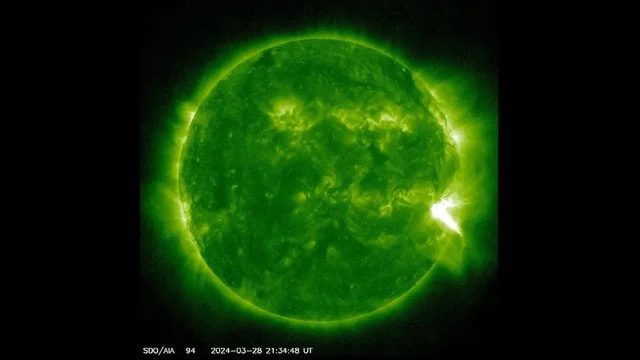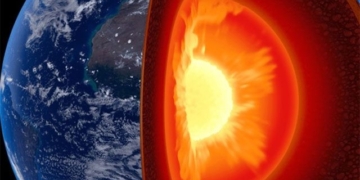A powerful explosion has ionized the upper atmosphere of Earth, leading to disruptions in shortwave radio signals.
According to Live Science, the National Oceanic and Atmospheric Administration (NOAA) has provided an explanation for the recent radio signal disruptions occurring in the Pacific Ocean.
The cause was identified as a “fireball” launched by the Sun on March 28. After a few days of travel, the extremely strong electromagnetic radiation from this “fireball” struck Earth’s magnetosphere, causing issues with radio communication systems.

Moment of the solar flare eruption, the root cause of the radio signal loss – (Photo: SDO/NASA).
This conclusion was drawn from images captured by the Solar Dynamics Observatory (SDO), a NASA spacecraft orbiting our parent star.
In the image, a very bright spot flares up from the Sun’s surface. This marks the moment the “fireball” was launched.
This event was classified as a flare reaching X1.1 class, one of the strongest flares ever emitted by the Sun. It began erupting from the Sun at 4:56 PM on March 28 (U.S. time), corresponding to 4:56 AM on March 29 in Vietnam.
Considering the time required for this fireball to reach Earth, the radio signal loss in the Pacific aligns perfectly with the timing.
This flare was also accompanied by a coronal mass ejection (CME), which can be understood as a large plasma fireball.
NOAA predicted it would veer away from Earth, but subsequent events showed that whether it deviated or not, this fireball, along with the accompanying flare, clearly caused a significant geomagnetic storm.
Earth may face even more intense impacts in the coming days as the Sun approaches the peak of its 11-year activity cycle.
However, this remains a natural phenomenon. Humans may find it difficult to directly perceive the effects of geomagnetic storms, but aerospace operators may need to closely monitor space weather, as it can also affect navigation and radio systems.




















































